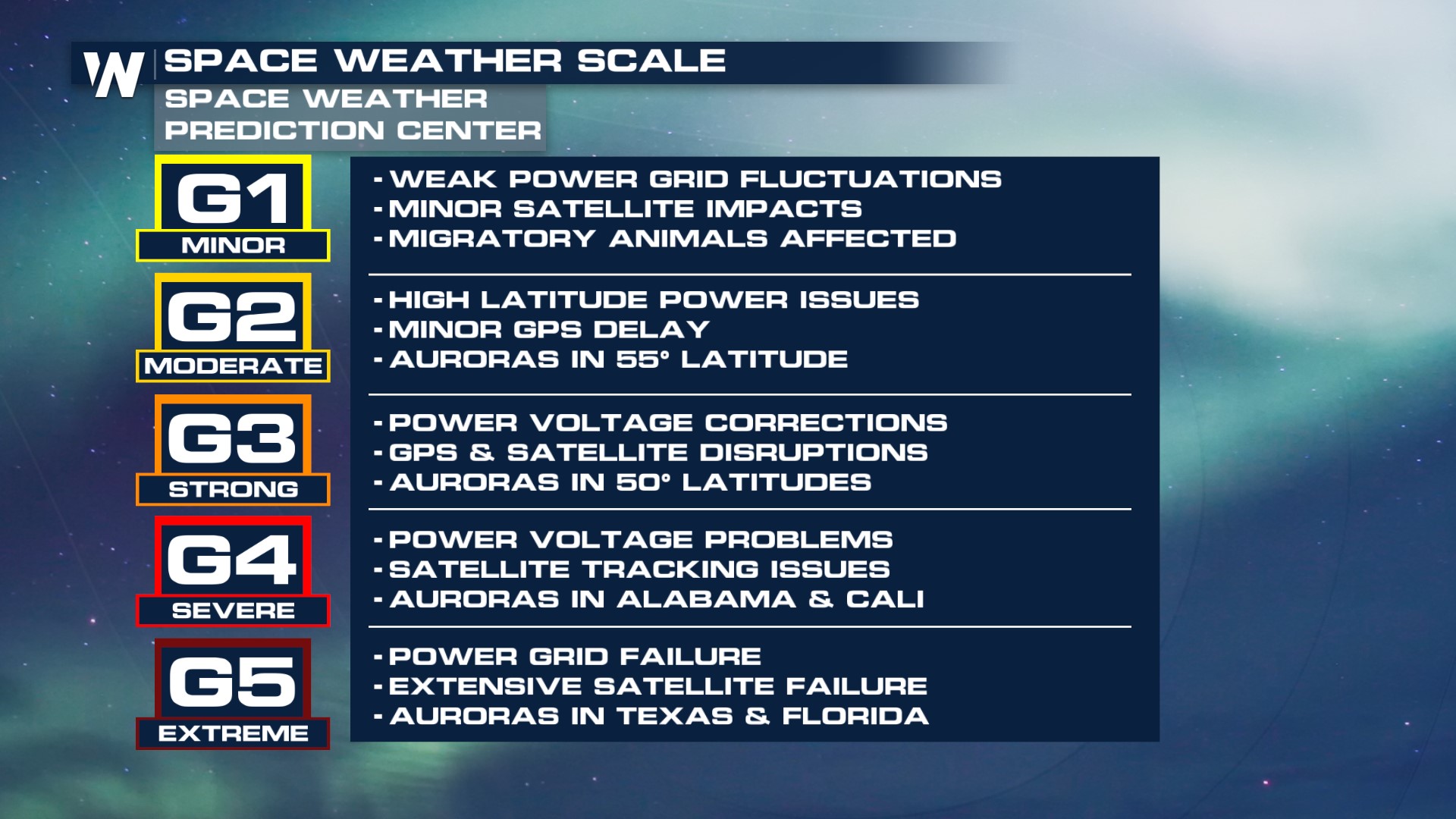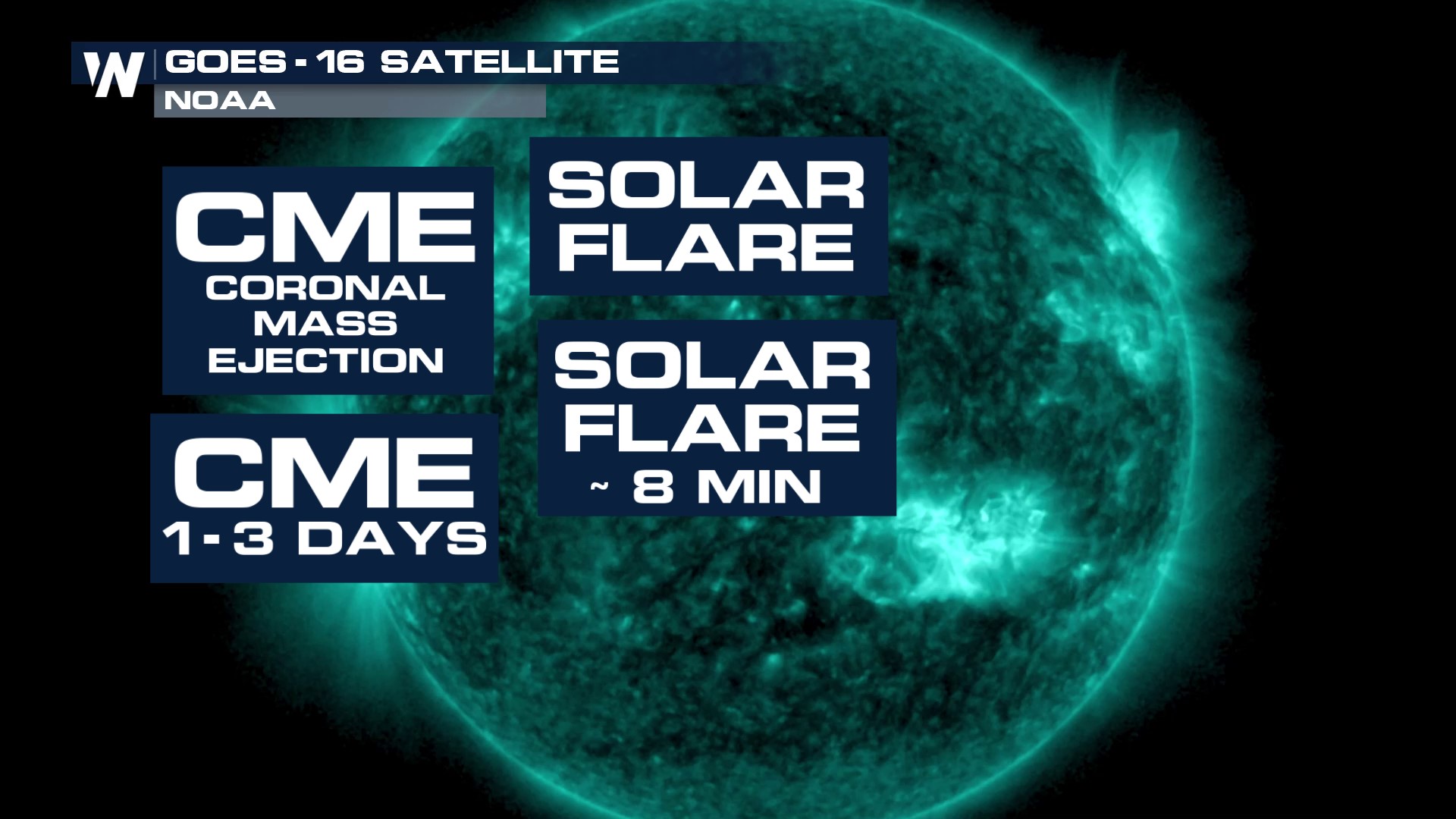Strongest Geomagnetic Storm Since 2003! Aurora Possible Through the Weekend
The Aurora Borealis put on an incredible display Friday night into Saturday morning, reaching extreme conditions that brought photographical aurora as far south as the Florida Keys.
NOAA's satellite captured the moment of a Coronal Mass Ejection on the sun on Wednesday, May 8th which was responsible for the geomagnetic storm on Earth.
Auroras are ribbons of brilliant light that usually appear around the northern latitudes when charged particles from the sun hit Earth's magnetic field. The particles shed energy as they collide with our atmospheric gasses, giving the aurora a spectacular glow of colors. Aurora Borealis is seen away from our poles and over the northern latitudes during stronger solar events, like on Friday night. A geomagnetic storm of level 5 (the scale continues to 5) was observed on Friday evening. The last time a G5 was observed in October 2003, which caused some power outages across the globe.
Understanding Coronal Mass Ejections (CMEs)
While the geomagnetic storms provide the opportunity to see the aurora at lower latitudes there are major drawbacks, "[they] can impact infrastructure in near-Earth orbit and on Earth’s surface, potentially disrupting communications, the electric power grid, navigation, radio, and satellite operations" according to NOAA. They are a result of multiple coronal mass ejections (CMEs) that have been released from the sun starting on Wednesday, May 8th, and will arrive in Earth's magnetic field through the weekend. According to the SWPC, "CMEs are explosions of plasma and magnetic fields from the sun’s corona. They cause geomagnetic storms when they are directed at Earth. The typical time it takes for a CME to arrive on Earth is between one and three days.
 According to NOAA, "a large sunspot cluster has produced several moderate to strong solar flares since Wednesday at 5:00 am ET. At least five flares were associated with CMEs that appear to be Earth-directed." Solar flares travel faster and arrive on Earth at the speed of light, about 8 minutes.
According to NOAA, "a large sunspot cluster has produced several moderate to strong solar flares since Wednesday at 5:00 am ET. At least five flares were associated with CMEs that appear to be Earth-directed." Solar flares travel faster and arrive on Earth at the speed of light, about 8 minutes.
 Stay with WeatherNation for the latest on the Aurora forecast and images of the spectacular lights.
Stay with WeatherNation for the latest on the Aurora forecast and images of the spectacular lights.